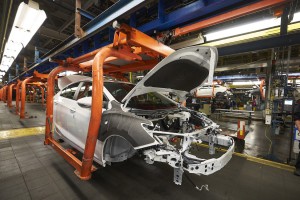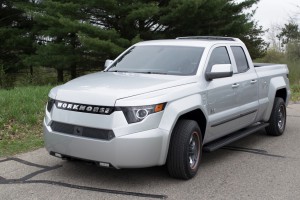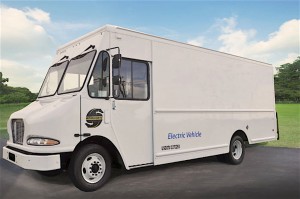
This may not be the last vehicle produced at GM's Lordstown, Ohio plant. The automaker is talking with Workhorse to sell the plant.
General Motors will begin the process of selling its shuttered Lordstown, Ohio, assembly plant to Cincinnati-based Workhorse Group and another newly formed venture, the automaker said Wednesday afternoon, largely confirming a tweet issued by President Donald Trump earlier in the day.
If the deal is completed, Workhorse is expected to use the sprawling factory, about an hour southeast of Cleveland, to produce electric trucks, creating hundreds of jobs in the process. The other “newly formed” company partnering in the deal is being led by Workhorse founder Steve Burns.
“This potential agreement creates a positive outcome for all parties involved and will help solidify the leadership of Workhorse’s role in the EV community,” said Workhorse CEO Duane Hughes.
Lordstown is one of five factories – including two assembly plants in the U.S. and one in Canada – GM last November said it would close as part of a shift away from passenger cars to light trucks. That move came as part of a broader cost-cutting program that will eventually result in the elimination of about 14,000 North American jobs.
(President Trump keeps tabs on GM’s Lordstown plant. Click Here for the story.)
Trump has repeatedly criticized GM for the cutbacks, threatening to take steps to punish the automaker. Political analysts have said the president is focusing on Lordstown, among the five plants targeted by GM because Ohio is considered critical to his re-election bid in 2020. How much of a role he actually played in linking GM with Workhorse Group is uncertain.

Putting out 460 horsepower, the W15 electric pickup is designed to be the ideal pickup truck, and it may be coming to Lordstown, Ohio.
In one of three tweets about Lordstown on Wednesday, the president took a more conciliatory tone towards GM and its CEO. “I have been working nicely with GM to get this done. Thank you to Mary B.,” the president said, referring to Chief Executive and Chairman Mary Barra, while also praising Ohio Gov. Rob Portman.
For her part, CEO Barra said, “We remain committed to growing manufacturing jobs in the U.S., including in Ohio, and we see this development as a potential win-win for everyone. Workhorse has innovative technologies that could help preserve Lordstown’s more than 50-year tradition of vehicle assembly work.”
While Trump appeared to be describing the sale as a done deal, the situation is more nuanced. Workhorse and its partner have laid out a preliminary bid which includes proposed financing for the deal. The battery-vehicle producer still has to complete its due diligence, as does General Motors, the company explained in a statement released this afternoon. In turn, the proposed acquisition still must be negotiated with the United Auto Workers Union, which still officially represents workers at the now-shuttered factory.
Workhorse was founded in 1998, ironically, when a group of investors took over several other General Motors operations producing stepvans and motorhome chassis. It was briefly taken over by truckmaker Navistar then sold to AMP Electric Vehicles in 2015 which changed the name to Workhorse Group Inc.
(For more on GM’s EV pickup plan, Click Here.)

UPS ordered 50 battery-electric vans from Workhorse Group. The company has 35,000 trucks that could be replaced in the years ahead.
Along with battery-powered vehicles, the company is also developing an all-electric, two-person drone, dubbed the Octocopter.
Neither GM nor Workhorse have announced whether the two will work together if and when a sale of the Lordstown plant is completed. The Detroit-based automaker has itself been investing heavily in electric propulsion, CEO Mary Barra outlining last year what she described as a “path to an all-electric future.” It plans to have more than 20 pure battery-electric models in its global fleet by the middle of the coming decade. Last week, GM said that will include an all-electric pickup.
As for Workhorse, it produces several different types of commercial trucks. It also is working on using a range-extended powertrain, with batteries powering the electric motors driving its wheels. The pack is expected to only generate about 80 miles of range but, when it runs down, a gas engine fires up. It works solely as a generator, providing additional current to run the truck’s electric motors.
Ironically, GM tried to negotiate a deal with another electric truck manufacturer, suburban Detroit-based Rivian, earlier this year. The deal fell through and that start-up subsequently negotiated an investment agreement with Ford Motor Co.
At the same time it announced the tentative sale of Lordstown, GM said it intends to invest another $700 million at three other Ohio facilities, creating another 450 jobs.
(Click Here for more on Ford’s deal with Rivian.)
“The U.S. economy and our core business are strong, so we can expand our commitment to U.S. manufacturing and Ohio and create job opportunities for our employees,” said GM CEO Barra. “We also expect to bring more jobs to the U.S. over time in support of the expected provisions of the USMCA.”

It’ll be back to ground zero when they fold in 5 years.